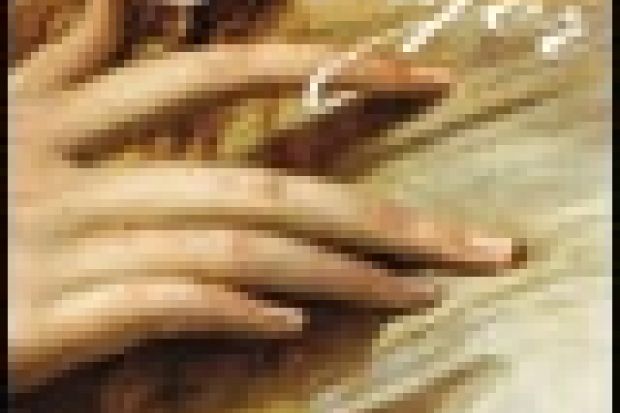The Finger is a kind of digitorum variorum. Angus Trumble, the senior curator of paintings and sculpture at the Yale Center for British Art, is the very model of learning lightly worn. Serious but never solemn, he floats like a butterfly and stings like a bee, poking exquisite fun at the more outlandish aspects of his prankish subject.
"Exquisite" is one of his favourite words, and in his writing he comes over as something of an exquisite himself. The captions to the illustrations are a case in point. "Anthony Van Dyck equips the Countess of Bedford with the dangling fascinator of a soft, pale fawn kid glove, a capricious amplification of the delicate ringlet that descends over her left shoulder."
Or: "Brightly coloured nail polish was a fad that crash-landed in Paris during the 1920s."
And: "Indication, suffering, supplication, and despair: in his Isenheim Altarpiece Matthias Grunewald exploited to the fullest extent the expressive and narrative potential of the fingers."
The author is fond of his little joke. The Finger aims to amuse as well as instruct. "Nevetheless, the handbook portion of my title is a genuine aspiration, and it may be of some comfort to the reader in search of specific technical, historical, cultural or other folkloric references that while, for obvious reasons, The Finger: A Handbook shuns footnotes, I have instead attempted to provide as much documentation as possible in the endnotes."
He is as good as his word. Readers in search of such comfort will find the endnotes a source of endless pleasure. On glove-wearing at funerals, for example, "C., 'Notes on Manners, Costume, etc.' N & Q (Notes and Queries), 1st series, vol. 10, no. 253, 1854, p. 178 (mourning); A. L. Humphries, ibid., 7th series, vol. 8, 12 October 1880, p. 293 (documenting the use of gloves suspended, garland-like, as simple memorials to dead children); Alfred Wallis, Mittens or Gloves as Funeral Decorations, ibid., 7th series, vol. 8, 12 October 1889, pp. 292-93 (i.e., of white paper carried at the funerals of young unmarried women, also the gift of black or, in the case of virgins, white gloves to all present at a funeral); Jonathan Bouchier, Mittens or Gloves as Funeral Decorations, ibid., 7th series, vol. 9, 18 January 1890, pp. 52-53 (citing Scott's Rockeby [1813]), in which Bertram Risingham hangs his steel gauntlet over an altar, not in connection with funerary rites, but as a sacred challenge to whoever was prepared to take it down). I am grateful to Steven C. Bullock, Professor of United States History at the Worcester Polytechnic Institute, Worcester, Mass., for allowing me to read a draft of his essay, A Handsome Mark of Respect: Funeral Glove-Giving in Early New England (forthcoming)."
Trumble is a scholar led happily astray. The darting text considers every kind of finger known to man, even the potato-finger in Troilus and Cressida. There is a short chapter on "The Finger of Play", including a regrettably brief excursus on erotic play ("the game of love: see Raymond Tallis, 'The Carnal Hand', section 5.2 of his magisterial The Hand: A Philosophical Inquiry into Human Being...").
If the whimsical tone sometimes grates ("those miserable persons who continue to practise the ancient arts of torture, and await higher judgement"), there seems little doubt that Trumble is in tune with the digital age. Publishers want new angles; to see a world in a grain of sand, or a culture in a finger, is very appealing. His previous book was A Brief History of the Smile. What next? Hair, surely, pleads for the Trumble treatment.
The Finger: A Handbook
By Angus Trumble
Yale University Press, 256pp, £18.99
ISBN 9780300166668
Published 12 October 2010
Register to continue
Why register?
- Registration is free and only takes a moment
- Once registered, you can read 3 articles a month
- Sign up for our newsletter
Subscribe
Or subscribe for unlimited access to:
- Unlimited access to news, views, insights & reviews
- Digital editions
- Digital access to THE’s university and college rankings analysis
Already registered or a current subscriber? Login
